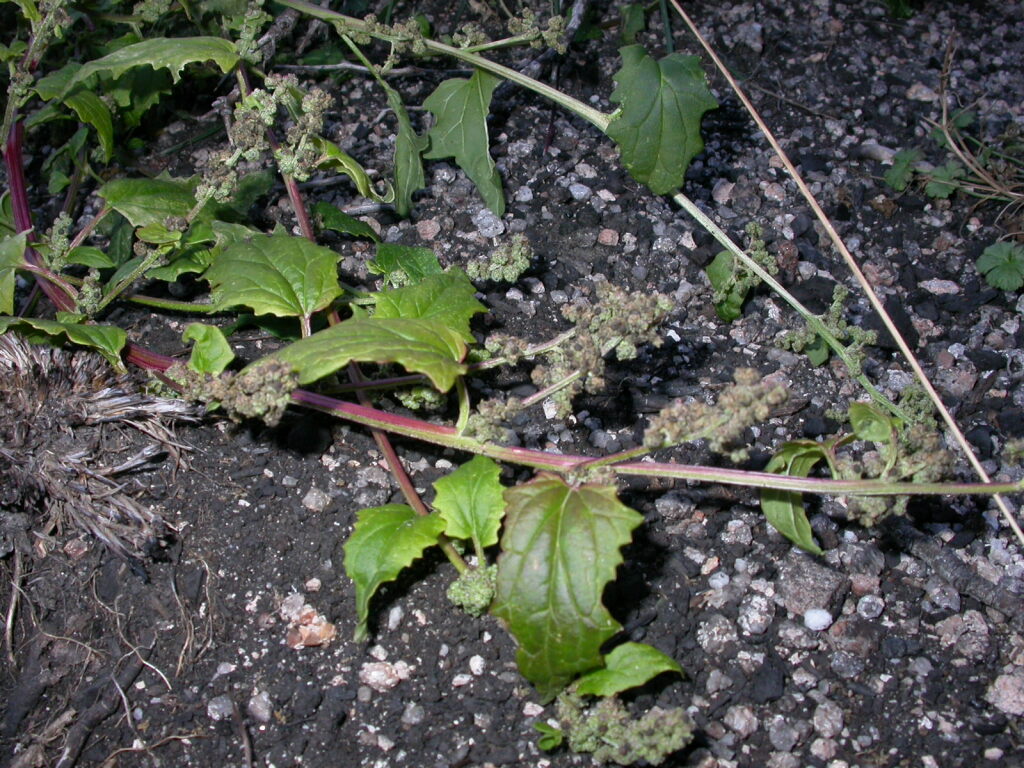Chenopodium erosum
R.Br.Mostly an erect annual to 1.5 m high, rarely procumbent. Leaves petiolate, triangular to ovate, 4–15 cm long, 0.5–6 cm wide, papery, margins raggedly toothed, green and glabrous. Flowers bisexual and female, in axillary and terminal panicles; tepals 5, slightly mealy when young, with stalked vesicular hairs along margins, shortly united near base, midrib prominent on inner face; stamens 5; pericarp membranous, persistent. Seed horizontal, blackish, 1.2–1.5 mm diam., prominently muricate in approximate spiralled or concentric lines, falling free from or united with widely opened fruiting perianth. Flowers Dec.–Feb.
EGU, MonT, VAlp. Also SA, Qld, NSW. New Zealand. Prior to extensive fires in the Victorian alps in 2003, Chenopdium erosum was known in Victoria only from rain-shadowed country near Suggan Buggan. However, following the alpine fires it appeared surprisingly in grassland, heathland and snow-gum woodland on Mt Buffalo and the Bogong High Plains where locally common. It was also common post-fire in parts of Kosciuszko National Park in New South Wales. It appears that in alpine environments at least, the seed is very long-lived and requires fire to promote germination. Alpine specimens seen to date have been prostrate or weakly ascending (to c. 25 cm high), unlike the erect habit of plants at altitudes below c. 500 m. It is not known if this is simply a response to the alpine environment or if the habit is genetically controlled.
Walsh, N.G. (1996). Chenopodiaceae. In: Walsh, N.G.; Entwisle, T.J., Flora of Victoria Vol. 3, Dicotyledons Winteraceae to Myrtaceae, pp. 129–199. Inkata Press, Melbourne.
 Spinning
Spinning


